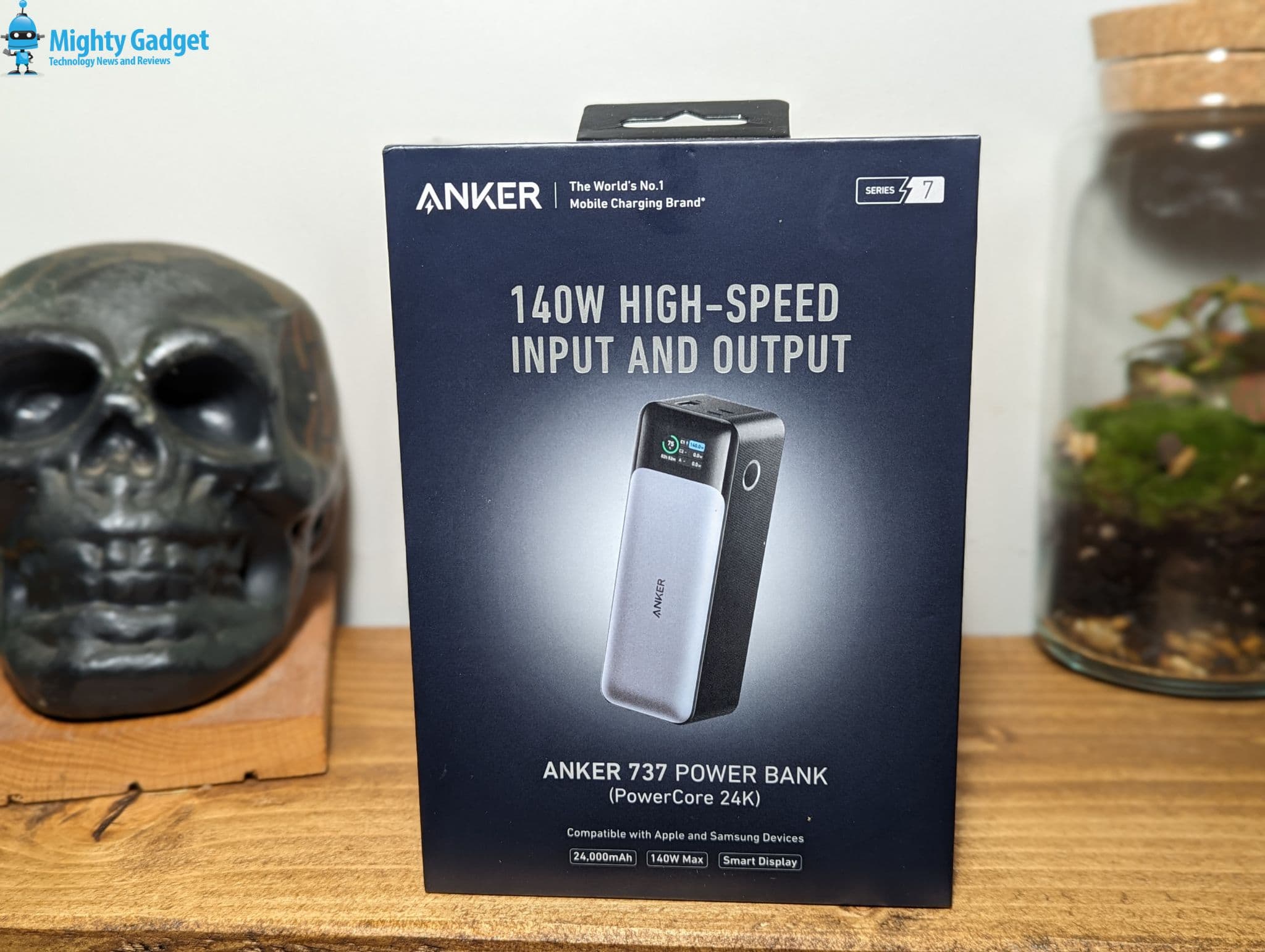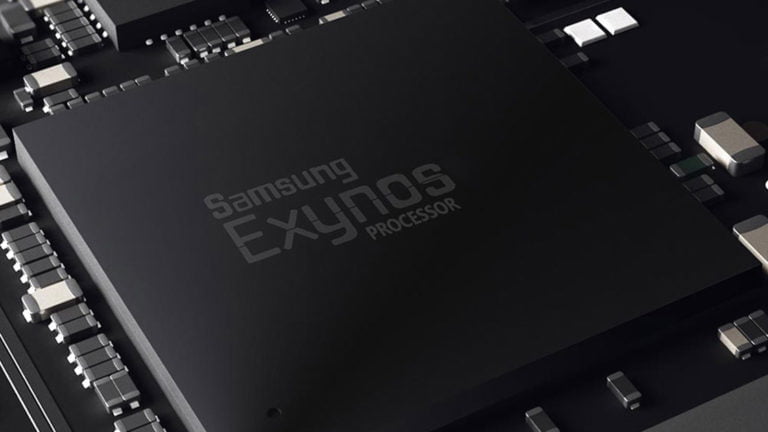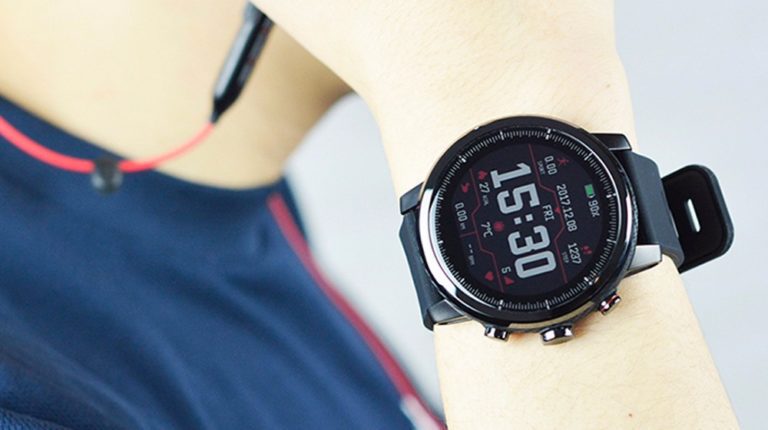Any links to online stores should be assumed to be affiliates. The company or PR agency provides all or most review samples. They have no control over my content, and I provide my honest opinion.
The Anker 737 Power Bank was announced towards the of last year alongside the wide range of new GaNPrime products.
This is the only power bank on the market that can do 140W power delivery using the new PD 3.1 specification. This, therefore, makes it suitable for the 16-inch MacBook Pro, which accepts 140W or any other laptop that can accept a power delivery input. Many gaming laptops have a 100W PD input.
| Preview | Product | Rating | Price | |
|---|---|---|---|---|

| Anker Power Bank, 24,000mAh 3-Port Portable Charger with... |
£127.60 | Buy on Amazon |
Specification
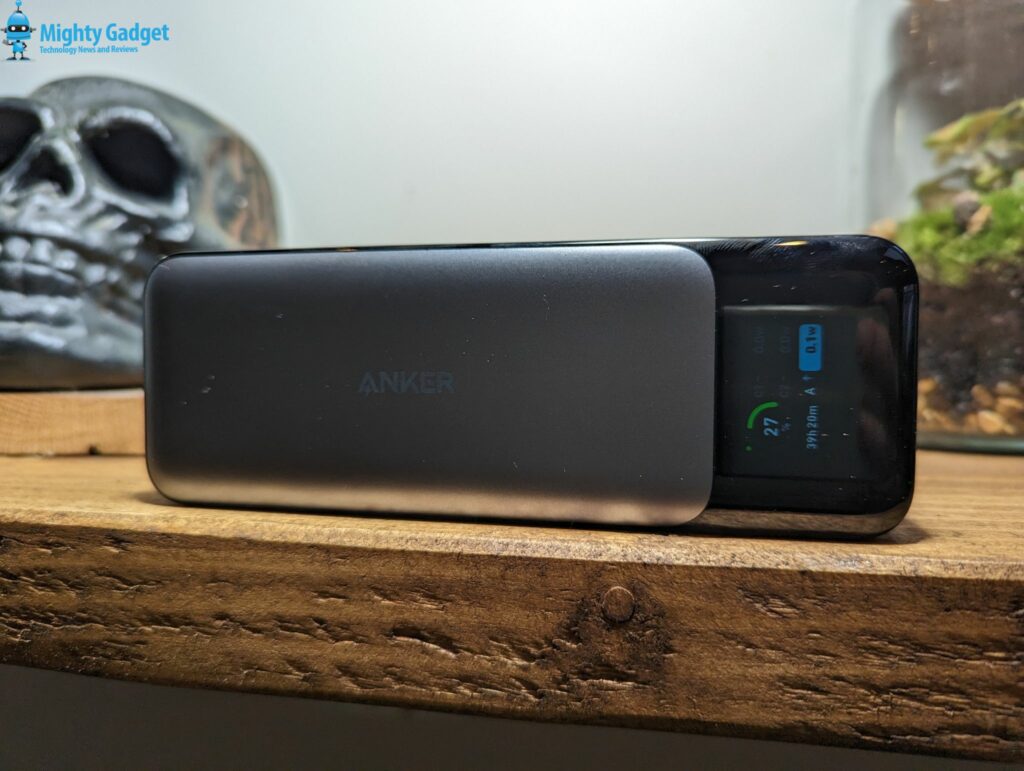

- Ultra-Powerful Two-Way Charging: Equipped with the latest Power Delivery 3.1 and bi-directional technology to quickly recharge the portable charger or get a 140W ultra-powerful charge.
- High Capacity and Long-Lasting: Featuring a 24,000mAh battery capacity and 2× longer-lasting battery life, juice up an iPhone 13 almost 5 times or a 2021 iPad Pro 12.9″ 1.3 times.
- Smart Digital Display: Easy-to-read digital display shows the output and input power and estimated time for the portable charger to fully recharge.
Port Configuration
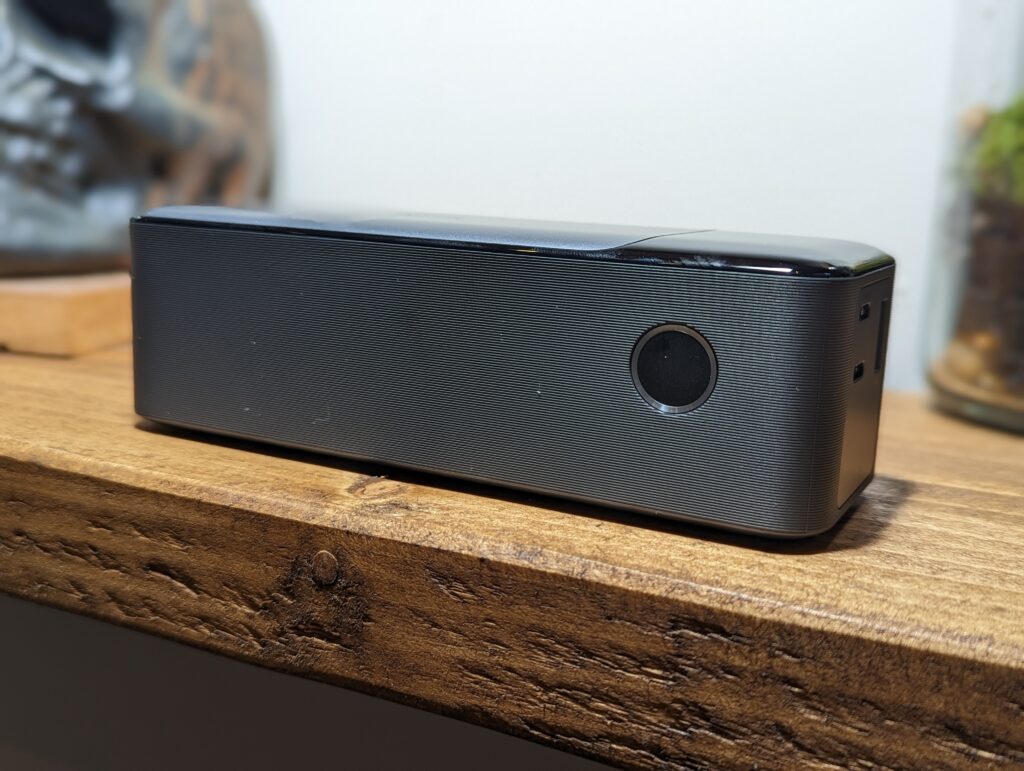

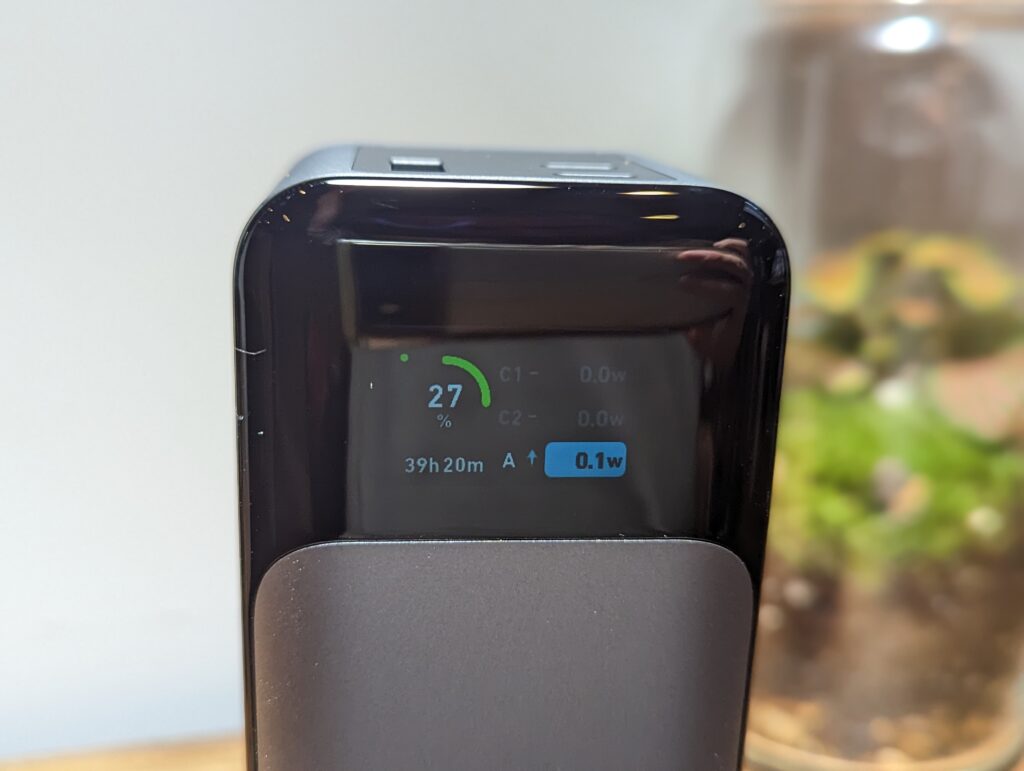

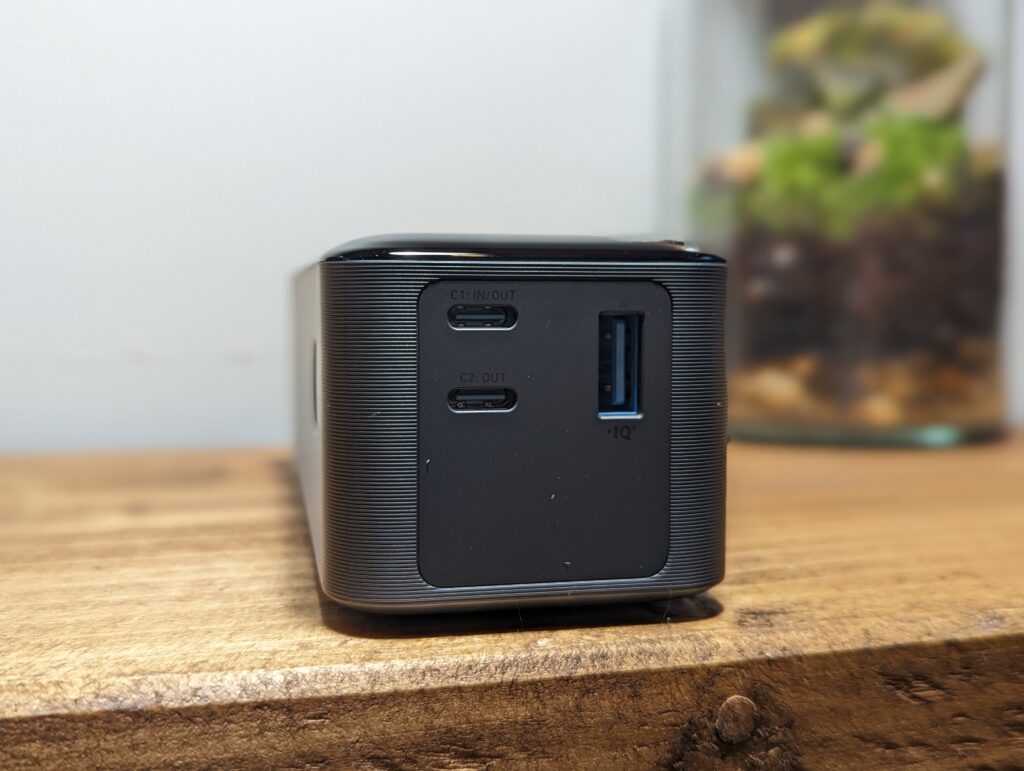

This only has three USB ports in total, which is a bit less than I’d like to see on a power bank at this price.
- USB-C 1 – 140W power delivery 3.1 for both output and charging
- USB-C 2 – 140W PD 3.1 output only
- USB-A – 18W
- Max Output – 140W
Voltages:
- USB-C – 5V ~ 3A/9V ~ 3A/15V ~ 3A/20V 5A/28V ~ 5A (140W Max)
- USB-A – 5V ~ 3A/9V ~ 2A/12V ~ 1.5A (18W Max)
Reddit also confirms this supports PPS with 45W possible on the Samsung Galaxy S22 Ultra.
Charge Examples
Anker claims this can fully charge:
- iPhone 13 (3240 mAh/ 12.41 Wh) – 4.9 times
- Samsung Galaxy S22 (3700 mAh)– 4.5 times
- MacBook Air 2020 M1 (49.9 Wh)– 1.3 times
They then state that this will charge the MacBook Pro 16″ to 50% in 40 minutes.
Design / Display
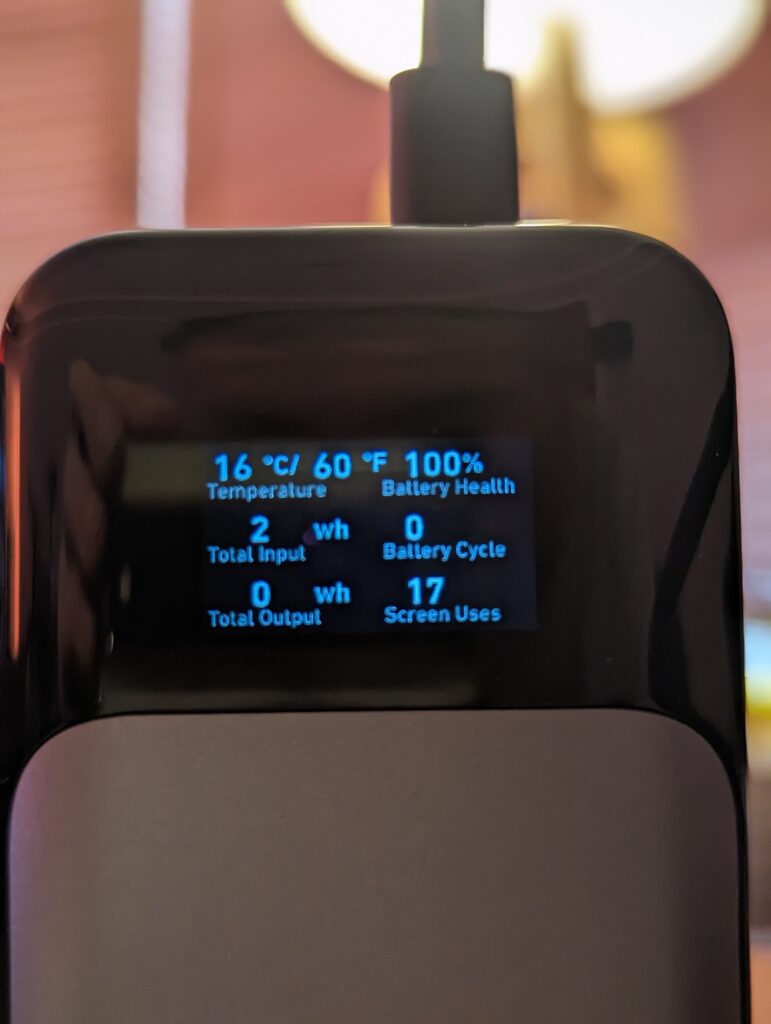

I wouldn’t normally bother writing much about the design of a power bank, but this one is different, thanks to its display.
The display shows the output and input power and the estimated time for the portable charger to fully recharge.
You can then switch to another screen which shows usage stats, including the current battery temperature, the battery health, total input, total output and the battery cycles. It seems like a really useful feature that will help you monitor the overall health of the batteries.
Advertised Capacity vs True Expected Capacity & Watt Hours
Anker advertises the cell capacity of this as being 24,000mAh (4,000mAh*6).
As I covered in my 100W PD power bank guide, the advertised capacity is less than what you will see charging your devices. This is true for all power banks.
Most power banks are created using Li-ion batteries, which have an average voltage of 3.7V. Consumer electronics don’t use that voltage, and the standard voltage of any USB port will be 5V, though this can go up to 20V with power delivery.
For the Anker 737, its six 4000mAh cells are actually 3.6v (21.6Vdc)
For a 5V output, you would need to recalculate the capacity as:
- 5V capacity = (3.6V * Advertised Capacity) / 5V
Therefore, for a 5V output on this 24,000mAh battery, you should have a 17280 mAh capacity.
Technically, a Watt-hour would be a more accurate capacity rating as this ignores the voltage. For the Anker 737 Power Bank, it has 86.4 Wh.
There are other factors to take into consideration, such as efficiency, but my real-world examples don’t seem to indicate too much of a problem here.
Testing Real World Capacity
To provide a rough idea of the real-world performance, I charged my Realme GT Neo 3 from flat to full which has a 4500 mAh battery.
After a full charge, I was left with 74% on the Anker 737 Power Bank, which would work out at roughly 17300mAh.
The display also shows the Wh input and output. My sample arrived with a 25% charge and charged by 70Wh, which would actually work out as 93.3Wh – In hindsight, I realised I charged my Pixel 6 a bit when I received it; hence the Wh being higher than expected.
In short, the power bank appears to provide as much capacity as they claim. You’d think that’s a certainty, but if you read reviews of cheap power banks, they rarely provide anywhere near the capacity they advertise.
Testing Power Output and Input
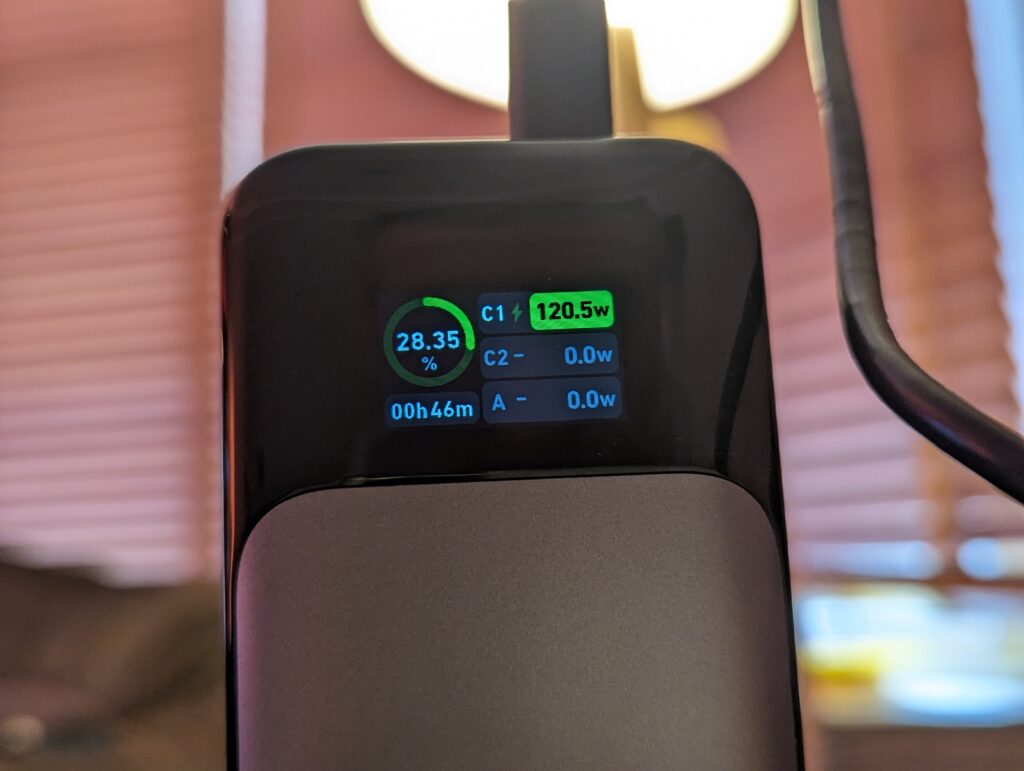

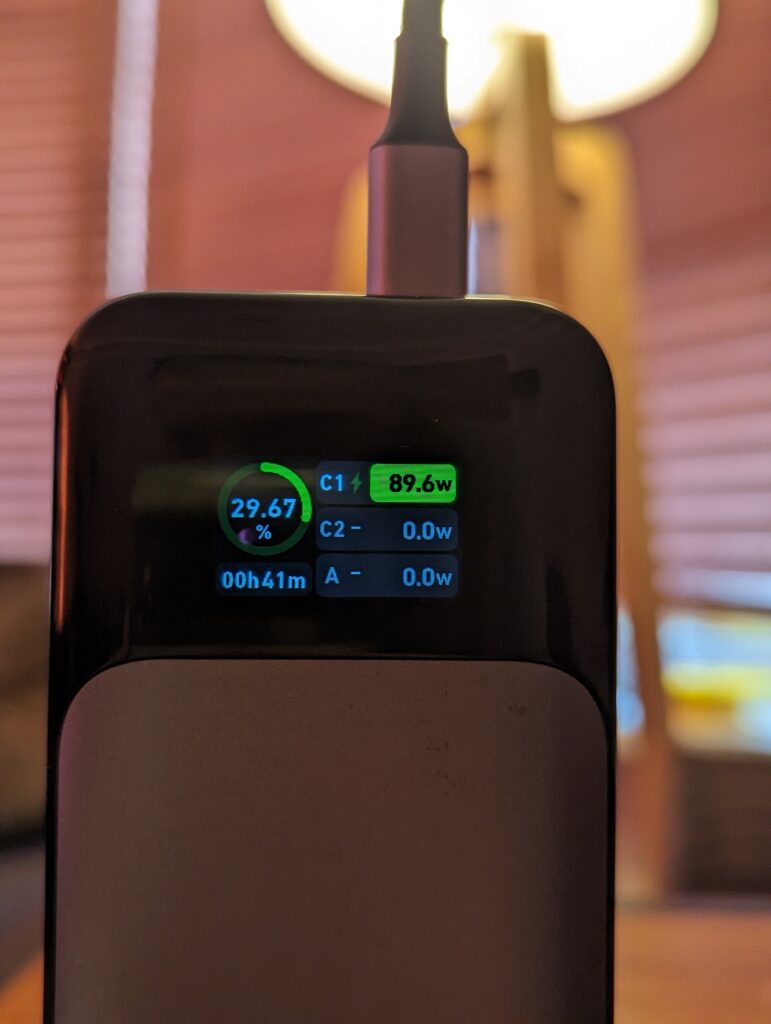

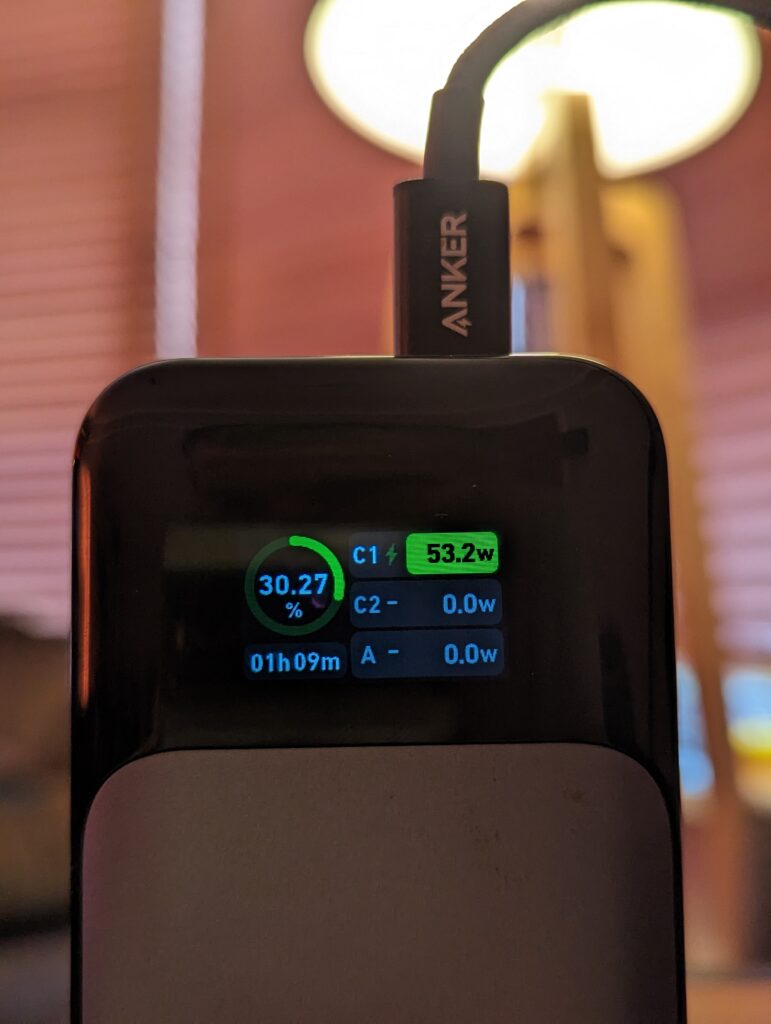

Anker says this can accept a 140W input, but they don’t actually sell a 140W PD charger. In the US, they have the single port Anker 717 Charger, which can do 140W. For the UK, they have the Anker 737 charger, which is limited to 100W max and 120W total.
However, I do have the Ugreen Nexode 140W GaNFast charger, so I used that.
My power bank arrived with 27% charge, and when using the included 140W cable, I typically saw 120W input, though it did occasionally jump a little higher than this. So a bit short of what Anker advertises, but still incredibly fast.
The 140W cable is important, and I am glad they included it. I tested charging with a 100W Ugreen cable and a 60W Anker cable. For the Ugreen cable, I got 90W, and the Anker was 53.2W. If you were to buy an Anker 765 140W USB-C cable, that would cost around £17. Ugreen do a 240W cable for about £22.
For the output, I don’t have a device that can accept 140W. I, therefore, used my EcoFlow RIVER 2 MAX and my ALLPOWERS S300 portable power stations, which can accept 100W and 60W USB-C input, respectively.
I also tested:
- Pixel 6: 20W peak (with phone starting at 50%)
- Huawei Matebook 13: 65W peak
- ZHIYUN MOLUS X100 LED (100W): 100W peak
Price and Alternative Options
| Preview | Product | Rating | Price | |
|---|---|---|---|---|
   | Anker Power Bank, 24,000mAh 3-Port Portable Charger with... |
£127.60 | Buy on Amazon |
The Anker 737 Power Bank (PowerCore 24K) has an RRP of £139.99 and is available from Amazon or Anker directly. At the time of writing, the Anker website had a 20% off code, taking the price down to £112.
There are currently no other power banks that can do 140W power delivery output.
I have done a more detailed post on the best 100W power delivery power banks. However, the two best alternatives are likely:
| Preview | Product | Rating | Price | |
|---|---|---|---|---|
  | imuto Laptop Power bank USB C PD 100W, 27200mAh Portable... | Buy on Amazon | ||
  | Zendure Power Bank Portable Laptop Charger 26800mAh with 4... | Buy on Amazon |
- Imuto X6G-27200 with a 27200mAh capacity and one port that can do 100W and another that can do 60W. It also has 2x USB-A ports. It is priced lower but doesn’t have the useful display that Anker has.
- Zendure Supertank Pro has four USB-C ports, with the first two ports capable of 100W input/output, and the other two can do 20W. The total output can go up to 138W. This brand actually states a rated capacity for 5V/3A of 17,000mAh. It has an OLED display giving your per port usage, and it can have its firmware upgraded to support new charging standards. The RRP is much higher at £230, but at the time of writing, there was a £50 off voucher, which still makes it much more expensive.
Overall
The Anker 737 Power Bank is undeniably expensive, but it is a high-end power bank with nothing else that can compete like for like.
For me, if I am spending £100+ on a power bank to charge a laptop that is worth potentially thousands, I think I would prefer to stick with a reputable brand name, and when it comes to power banks, you don’t get more reputable than Anker.
Originally posted on mightygadget.com – Follow on Twitter – Instagram – Facebook – Mighty Gadget Latest Reviews
Anker 737 Power Bank (PowerCore 24K) Review Rating
Summary
The Anker 737 Power Bank is undeniably expensive, but it is a high-end power bank with nothing else that can compete like for like.
Overall
95%-
Overall - 95%95%
Pros
- 140W PD 3.1 to charge the 16-inch MacBook Pro or other 100W PD laptops
- Real world performance matches the advertised capacities
Cons
- Price
I am James, a UK-based tech enthusiast and the Editor and Owner of Mighty Gadget, which I’ve proudly run since 2007. Passionate about all things technology, my expertise spans from computers and networking to mobile, wearables, and smart home devices.
As a fitness fanatic who loves running and cycling, I also have a keen interest in fitness-related technology, and I take every opportunity to cover this niche on my blog. My diverse interests allow me to bring a unique perspective to tech blogging, merging lifestyle, fitness, and the latest tech trends.
In my academic pursuits, I earned a BSc in Information Systems Design from UCLAN, before advancing my learning with a Master’s Degree in Computing. This advanced study also included Cisco CCNA accreditation, further demonstrating my commitment to understanding and staying ahead of the technology curve.
I’m proud to share that Vuelio has consistently ranked Mighty Gadget as one of the top technology blogs in the UK. With my dedication to technology and drive to share my insights, I aim to continue providing my readers with engaging and informative content.
Last update on 2024-04-18 / Affiliate links / Images from Amazon Product Advertising API

